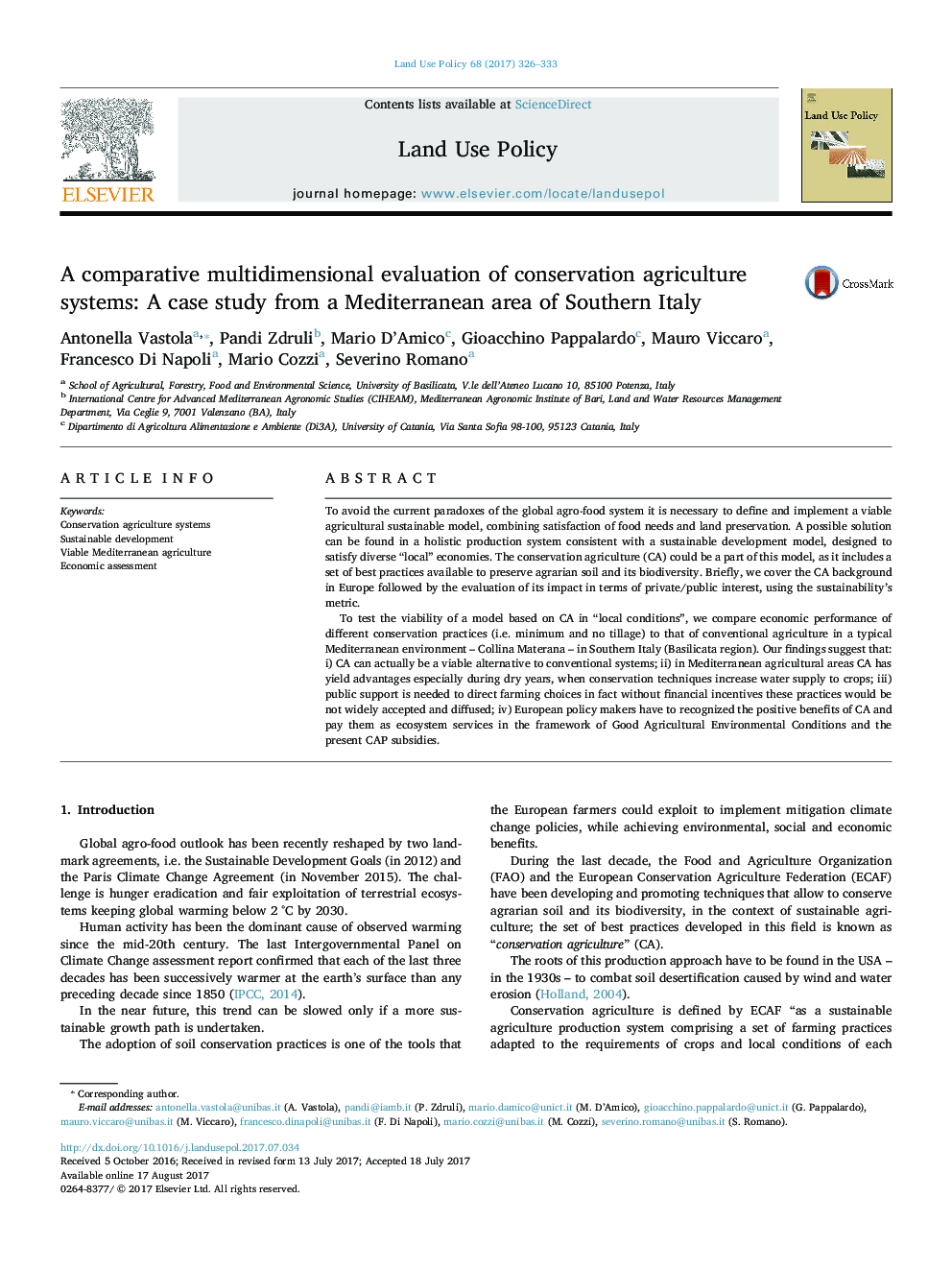| Article ID | Journal | Published Year | Pages | File Type |
|---|---|---|---|---|
| 6460547 | Land Use Policy | 2017 | 8 Pages |
â¢The importance of the conservation agriculture (CA) in the agri-food systems is discussed.â¢The viability of a model based on CA in “local conditions” is tested comparing economic performance of different conservation practices.â¢Three soil management systems are considered: no tillage, minimum tillage and conventional tillage.â¢In Mediterranean agricultural areas CA has yield advantages especially during dry years.â¢European policy makers should propose incentives to pay the positive benefits of CA as ecosystem services.
To avoid the current paradoxes of the global agro-food system it is necessary to define and implement a viable agricultural sustainable model, combining satisfaction of food needs and land preservation. A possible solution can be found in a holistic production system consistent with a sustainable development model, designed to satisfy diverse “local” economies. The conservation agriculture (CA) could be a part of this model, as it includes a set of best practices available to preserve agrarian soil and its biodiversity. Briefly, we cover the CA background in Europe followed by the evaluation of its impact in terms of private/public interest, using the sustainability's metric.To test the viability of a model based on CA in “local conditions”, we compare economic performance of different conservation practices (i.e. minimum and no tillage) to that of conventional agriculture in a typical Mediterranean environment - Collina Materana - in Southern Italy (Basilicata region). Our findings suggest that: i) CA can actually be a viable alternative to conventional systems; ii) in Mediterranean agricultural areas CA has yield advantages especially during dry years, when conservation techniques increase water supply to crops; iii) public support is needed to direct farming choices in fact without financial incentives these practices would be not widely accepted and diffused; iv) European policy makers have to recognized the positive benefits of CA and pay them as ecosystem services in the framework of Good Agricultural Environmental Conditions and the present CAP subsidies.
